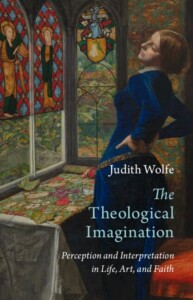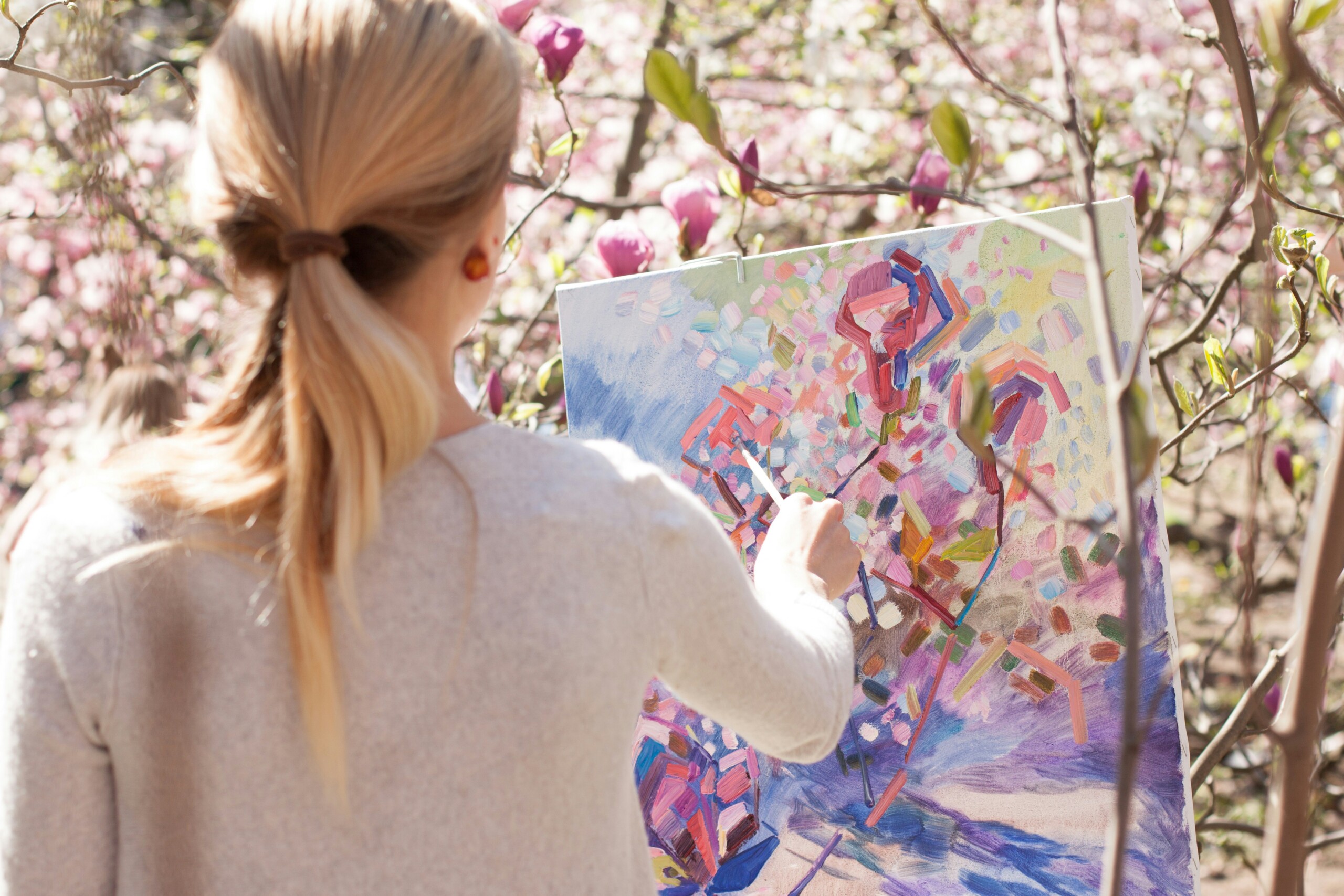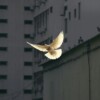
The Theological Imagination: Perception and Interpretation in Life, Art, and Faith. Current Issues in Theology
We typically relegate the imagination to the realm of make believe. By creating fantastical worlds and playing pretend, the imagination in this view seems like an escape from reality. But as Judith Wolfe’s The Theological Imagination explains, the imagination is not an escape from reality, but what shapes our reality.
Following in the philosophical tradition of Hume and Kant, The Theological Imagination defines the imagination as the hidden faculty that interprets and makes sense of our perceptions of the world. The imagination in this sense is less about creating new worlds than interpreting our own. The imagination helps us recognize the patterns and symbols around us, so that we can interpret two dots above an upward curving line as a smiling face, or blotches of colorful paint as Monet’s water lilies. In addition to interpreting everyday images, the imagination allows us to interpret the way we and other people live and act. It shapes our “way of seeing the world as a whole” (8).
Recognizing dragons and fairies as the work of the imagination is easy enough. But this deeper reality of the imagination is largely hidden. We think we see the world the way it is, failing to recognize that the way we see the world is always a creative and interpretive process. In her book, Wolfe calls us to “come to terms with our irreducibly constructive, imaginative perception in the world,” encouraging us to “shoulder the work of the imagination” so that we can “recognize its limits and expand its possibilities” (12).
Wolfe then shows us what that “work of the imagination” might look like. By drawing upon an impressive array of visual and written artwork from Shakespeare, Rainer Maria Rilke, Pablo Picasso, T. S. Eliot, and Michelangelo, Wolfe’s book is deeply interdisciplinary, keeping “theology, philosophy, history, psychology, art history, and literary criticism in continuous conversation” (20). The result of her effort is a surprising, insightful, and ultimately beautiful exploration of the imagination. With illustrative examples from across the arts, Wolfe grounds what can be a very abstract subject in concrete illustrations. By directing our eye toward beautiful works, she demonstrates how exercising the imagination can help us to see in new ways and how exercising the imagination is a deeply theological act.
Faith, Wolfe says, is intimately connected to the imagination, because it invites us to see and interpret the world through the Christian story. Conversions in Scripture are “not so much deliberate decisions as sudden shifts of perspective” (97). Jesus’s followers are rarely convinced by reason, but come to “see Jesus,” thus “transform[ing] their vision not only of him, but with him also of the world, themselves, and how they are to speak, act, and live” (97). Jesus’s parables, too, “aim to inspire new ways of seeing ordinary circumstances” (97). Faith, these examples show us, equips believers with a new depth of vision. The world suddenly has new meaning.
Christian theology, Wolfe says, teaches us that the world is God’s “poema,” that the world was purposefully and lovingly created. But a poem asks us to participate in it: it needs a reader to complete the work. A reader often needs to be trained to understand poetry, and so too, if we wish to better participate in God’s “poema,” we must train our senses to “see things aright” (112). Spiritually seeing, Wolfe says, enriches our ability to see a “depth of intention, significance, beauty, or connection in and among ordinary things” (119).
But faith, like art, teaches us there are risks and limits to our seeing. We cannot know God in full. We cannot know for certain if what we believe is true. We are like the seed who cannot see the oak tree, and so there are “gaps in human experience that do not and will not make sense” (122). We are constantly at risk of mis-interpreting God and God’s will. Since our imagination is largely shaped by patterns of meaning-making inherited from “our families, communities, and societies” (15), these inherited patterns affect how we interpret the world and our role within it—including how we envision God. These patterns of interpretation act as a kind of lens we put on to see, and they can both enrich or limit our vision. Faith looked, for instance, very different in Nazi Germany than it did to first century Christians, and the Jesus who holds a gun and drapes an American flag over his shoulder looks very different from the Jesus that Saint Francis describes.
The imagination can, in other words, be appropriated and corrupted. We must, Wolfe insists, confront the “challenge of inheritance” (68) and recognize how the imagination can be “endlessly exploited by economic and political players, whose advertisements and propaganda are, above all, exercises in moulding our ways of imagining the world” (17). She reminds us that we must learn to bear ambiguity, to recognize that we are not “fully at home in our interpreted world,” as the poet Rilke puts it. And since we tend to “rely increasingly on expected patterns or priors as we age,” Wolfe says, “it is very important to exercise the imagination” (80).
Art is a form of exercise for the imagination. Art, Wolfe says, helps us both to become aware of the role of our imagination in interpreting the world around us and to expand our way of seeing. By disrupting and unsettling our “habituated process of imagining,” art can show us how we might be mis-seeing something or only seeing it one way (such as an image that can either be a duck or a rabbit, depending on what you focus upon). Art can thus reveal the potential limits of our habitual ways of seeing and teach us how to pay attention and look more deeply.
In her chapter on social roles, for instance, Wolfe explains how art can reveal “dynamics we couldn’t see for ourselves” (53). Social roles are one of our inherited patterns and, since they are bigger than us, “can become moulds into which we can pour our liquid selves” (45). If I feel as though I’m fulfilling the aim of my social role, such as being a good wife, or good professor, I’m likely to feel a sense of satisfaction. But, Wolfe says, social roles can also be constraining. She draws upon Shakespeare’s Romeo and Juliet, explaining how Juliet’s role as a daughter conflicts with her role as a lover, revealing the ways that our roles are often “brittle” and “unreliable” (51). And Shakespeare’s reminder that “all the world’s a play,” Wolfe says, reminds us that we often are putting on an act of sorts, whether it’s for our boss, our children, or our students. Watching a play allows us to pause that play-acting for a moment as others play-act for us; theater “temporarily releases its audience” from having “to play for others” (54). After the play finishes, when we return to ordinary life, what we have seen on stage may allow us a greater depth of vision, so that we might “recognize others as exceeding mere roles or as potential inhabitants of different roles” and thus “help them know themselves better” (60). Ultimately, Wolfe concludes, our role-playing reminds us that “we are not yet ourselves” (62), and that our true identity is found when we allow “ourselves to be seen by God” (63).
Wolfe’s other chapters likewise investigate the relationship between faith, art, and the imagination through her insightful analyses. She explains how poetry can teach us to bear ambiguity; how certain kinds of art (such as modern and postmodern art) frustrate our abilities to find a single “meaning” and force us to accept there could be many interpretive responses; how metaphor is the heart of Christian language and practice; and how art of the apocalypse, by allowing us to reflect on our potential “end,” might help orient us today.
Both faith and art, Wolfe says, invite us to explore and expand, to see further. But faith and art also teach us to be aware of our limitations, to acknowledge that our vision is incomplete, or that we might be misinterpreting what we can see. Rather than being frustrated by this tension between expansion and limitation, Wolfe calls us to acknowledge this duality and accept the uncertainty of our vision. We cannot, she says, “eliminate the risk that is inherent in our imaginative inhabitation of the world” (164). We can, however, “learn to live it” (164).
This rich and concise account of the philosophical and theological underpinnings of the imagination will be of great interest to all scholars and laypeople interested in the intersection between art and faith. Though Wolfe’s analysis might occasionally be dense for readers outside philosophy and theology, her frequent use of illustrations provides helpful guides to readers, while adding a depth and insight that brings even the most abstract aspects of her argument into sharp focus. I have little doubt that the range and depth of interdisciplinary inquiry in The Theological Imagination will make it the new standard in the field.
























One Comment